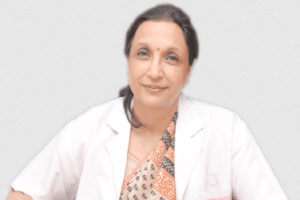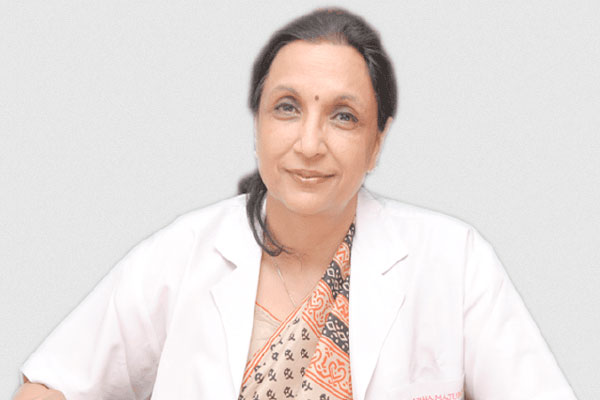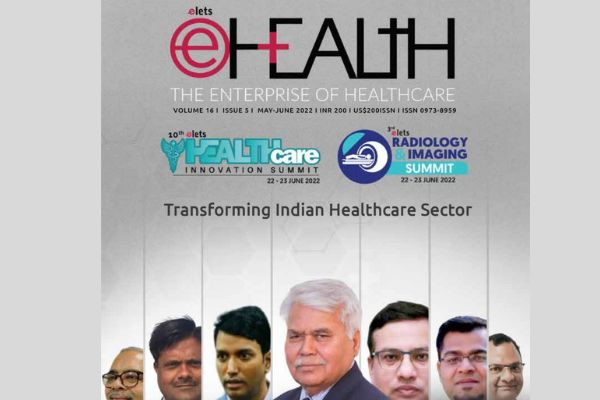‘Sophisticated Labs and High-End Technology Ensure IVF Success Rate’
 Out of over a billion people in India almost 4.2 percent suffer from infertility, creating a huge opportunity in the IVF sector. Affordability, awareness, and self regulation are important areas which need to be worked upon to streamline the sector, says Dr Abha Majumdar, Director and Head of IVF, Sir Ganga Ram Hospital, in conversation with Elets News Network (ENN).
Out of over a billion people in India almost 4.2 percent suffer from infertility, creating a huge opportunity in the IVF sector. Affordability, awareness, and self regulation are important areas which need to be worked upon to streamline the sector, says Dr Abha Majumdar, Director and Head of IVF, Sir Ganga Ram Hospital, in conversation with Elets News Network (ENN).
Q You were a part of the team responsible for the first IVF baby born in north India in 1991. Tell us about the experience how you made it possible at a time when reproductive treatment was at its nascent stage?

I joined Sir Ganga Ram Hospital as a junior consultant in February, 1987. Since I was interested in treating infertility, I started looking after the free infertility OPD on Thursdays. This clinic then provided only basic treatment for infertility i.e Ovulation Induction, Postcoital Test, and Intrauterine Insemination (IUI).

The birth of India’s first scientifically documented IVF baby occurred in 1986 with the efforts of Prof T C Anand Kumar and Indira Hinduja in Mumbai. Two years later, in 1989, we felt the need to take infertility treatment to a higher level in northern India. It was the foresight of Dr S K Bhandari who was the head of the Obstetrics and Gynecology Department that we started to develop this part of infertility management.
We made a team of three, Dr M Kochhar, a gynecologist; Dr Raj Gaur, a senior retired scientist (PHD in genetics) from AIIMS and myself. Initially, I went once to Dr Sadhna Desai’s IVF (In-Vitro-Fertilisation) centre in Mumbai to see ultrasound guided egg pickup.

Dr Gaur herself used to make culture media by mixing various salts together. Ultrasound monitoring system was developed with the help of Dr Deepak Chawla, the in-house ultrasonologist of Sir Ganga Ram Hospital. We used to procure gonadotropins as well as gonadotropin-releasing hormone agonist (GnRH agonist) from SukhSagar chemist in Mumbai due to unavailability of same in Delhi.

Fertility and Sterility, and Human Reproduction were two eminent journals in this field which used to publish research papers on this very topic every two months. We took help of these journals at every stage. In fact, these became our ‘Gurus’ in terms of learning IVF protocols.
This is how we started our IVF journey and had our first success with the birth of baby Garva on 21 September, 1991. Another huge challenge at that time was to convince patients to get IVF done because the procedure was new to them as well as to us.
However, since then we have been rolling forward towards better technology, protocol and results. From a modest number of 26 cases in the first year of its inception, the center now provides IVF to more than 1,500 couples annually. With the incorporation of latest technologies and rigorous persistence with quality control, the center has achieved high success rates, comparable with international standards.
Q How do you analyse Indian reproduction treatment market in terms of huge opportunity it offers? How does it fare in comparison to global standards?
Out of 1.2 billion Indian population, almost 4.2 percent suffers from infertility. Approximately one percent of all infertile couples need IVF though only 0.05 percent has access to it.
In our country, we are doing approximately one lakh cycles in a year whereas we need around 93.3 lakh more cycles in a year. (Assessment by E&Y 2015). Therefore, the opportunity for IVF is huge.
However, the gap between the one who needs IVF and those who can eventually have it, is also huge. This is not only due to financial constrains but also because of unavailability of the required technology in small towns and villages.
New centers keep mushrooming in the metro cities i.e few colonies or a single road has as many as 8 to 10 centres. The cost of establishing these centres is high as most equipment needs to be imported from various countries.
Q It is being believed that 75 percent success of IVF depends on the technologicallyequipped labs. What kind of technology the hospital banks upon to improve the treatment outcome?
It is true that IVF success rate depends on the lab. Most of the standard equipment is available to all these IVF clinics. However, quality control and quality assurance are major lacuna in our system. To improve things on this area, well-qualified and trained embryologists are required to monitor the functioning of these laboratories. Otherwise, the treatment outcome becomes ineffective. All these centers should have in-house embryologist to take care of quality maintenance in order to improve the treatment outcome.
Q The IVF industry has a lot of areas for improvements i.e. self-regulation, accreditation and formation of a registry or a data bank of IVF centers. How do you analyse the statement?
It is not only the IVF industry which would improve by self regulation but also it is the requirement of every sphere of work in our country without which accreditation alone may be of no use. A registry or central data bank is needed which would not only minimise abuse of technology but also prevent any complications to patients who opt for IVF. QAs per the data, around five percent of the needy people in India actually reach an IVF specialist. How do you see role of awareness, affordability, and insurance factor? India needs to have IVF centers in every nook and corner of the country, not to be concentrated in metro cities only. There is a huge deficit or lack of awareness among people about the benefits of IVF technology. Moreover, affordability is also a major factor which makes many a couples averse to seek the treatment. In our country where per capita income is less than 1.1 lakh per year as per 2018 census, the costly treatment puts huge financial burden upon couples. In the wake of these facts, insurance plan would be very beneficial for couples who can’t afford the treatment. But, the difficult task is how real beneficiaries would be identified so that they would be given insurance assistance.
post_id:uld_count:
Cookie not set
Value 1: 0
Value 2: 10
















